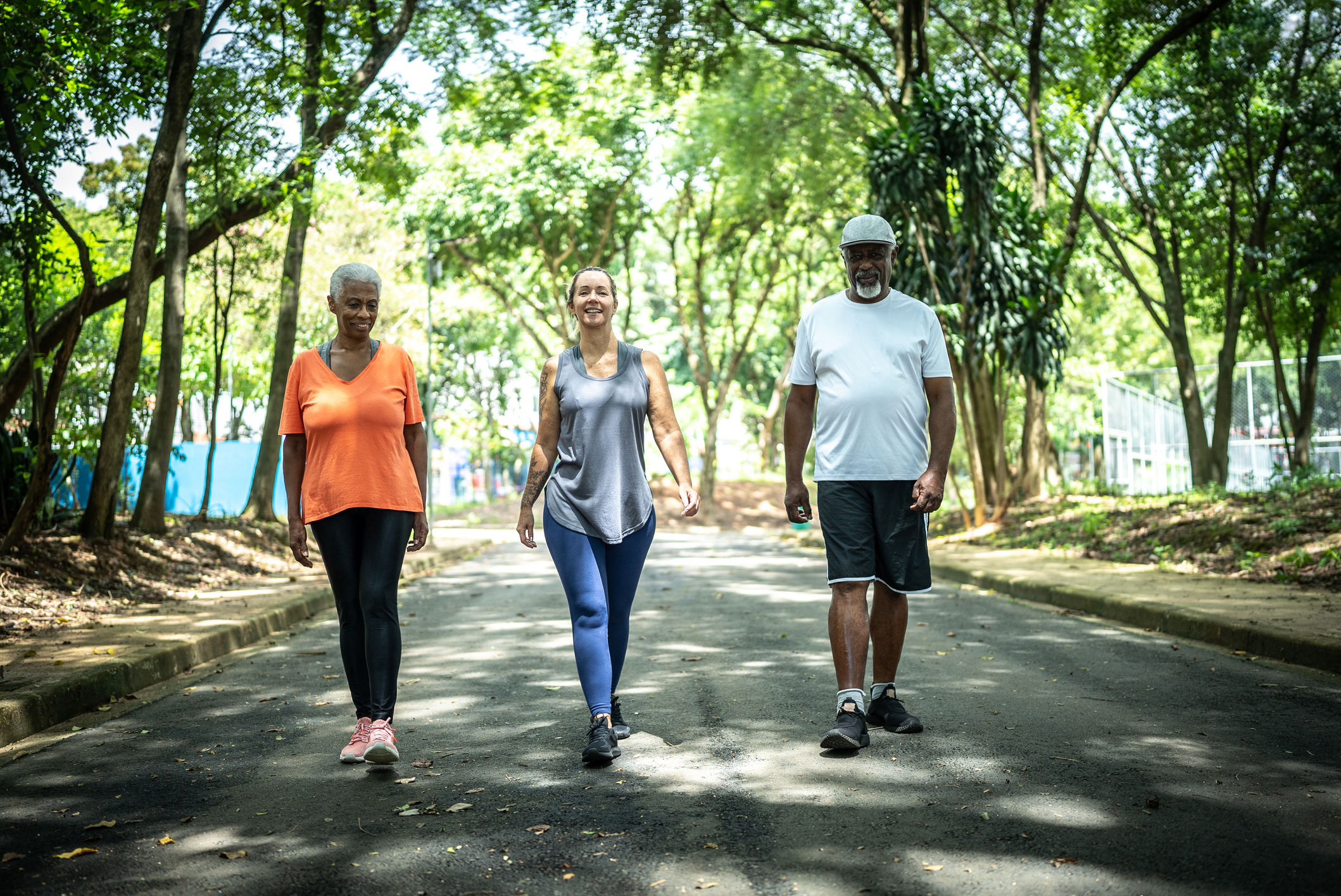Get Easy Health Digest™ in your inbox and don’t miss a thing when you subscribe today. Plus, get the free bonus report, Mother Nature’s Tips, Tricks and Remedies for Cholesterol, Blood Pressure & Blood Sugar as my way of saying welcome to the community!
12 conditions signaled by the way you walk

When we walk, we really don’t think about it, we just do it. But when you look closely, you see that everyone walks a little differently. Some people walk faster than others, some have a longer stride, and some have a different rhythm to their gait.
Some of these differences can be attributed to physical size. But others can actually be indicators of your physical and mental well-being.
Here’s what your walk may say about your health….
Walking at a slow pace
Unfortunately, if you’re naturally a slow walker, it could spell trouble for your health. In one study, researchers found that slow walkers at age 45 are more likely to show both accelerated signs of aging and decreased cognitive function. This is especially true when it came to their lungs, teeth and immune system.
If you find you’re walking slower than you used to, it could be another signal of cognitive trouble. Scientists say changes in the speed of your walk over time may be one way to predict Alzheimer’s disease or other memory problems. If Alzheimer’s is the cause, your walk will continue to slow as the disease progresses.
Veering left while walking
As strange as this may seem, veering to the right when you walk may actually be a sign of anxiety. When researchers tracked individuals’ movements as they walked blindfolded, they found the more stressed the participant felt, the farther to the left they strayed from a straight-ahead target. They theorized this could be because the right side of the brain is hard at work handling the individual’s doubts and worries instead of their balance.
A swaying walk
Rocking from side to side as you walk could mean you’ve suffered a mild brain injury. A blow to the head could cause temporary brain damage that causes you to sway while you walk. If you play contact sports, you’ll want to be especially aware of this particular change in your walk.
Limping
Limping while you walk could be because of an injury to your hip, leg, ankle or foot. But it could also signal a deeper underlying condition: osteoarthritis. If you favor one leg over the other, or if your legs seem to buckle occasionally when you walk, you could be suffering from this type of arthritis, which wears away your joints over time.
High, slapping steps
When you walk, your gate should be smooth and even. If instead, it looks like you’re trying to climb an invisible staircase, this could signal foot drop, a condition that causes your toes to drag as you walk. With foot drop, you tend to step higher to make up for the dragging toes. This can affect one or both of your feet, though one foot is more common.
Foot drop indicates muscle weakness and may mean you’ve injured a nerve in your leg. Or it could be a sign or something more serious — a nerve, muscle, brain or spinal disorder like muscular dystrophy or multiple sclerosis.
A stiff, unsteady gait
Several specific weaknesses in the way you walk can also indicate multiple sclerosis. You could move with stiff, swinging steps with toes pointed inward. You might lose your balance more often. Your knees may cross when you walk, a phenomenon known as “scissoring.” Or you could lose feeling in your feet, making it difficult to tell where the floor or ground is and causing a hesitancy and irregularity in your gait.
Moving one side all at once
Moving one side of your body as a whole while you walk could signal a bad back. When someone has pulled a muscle or has a herniated disc in your lower back, they tend to turn the chest and shoulders in the same direction as the hips when walking to avoid twisting the back. So instead of the opposite hand and foot being ahead of you when you stride, your left arm will sway with your left leg and vice versa.
Dragging your feet
If you walk with slow, scraping steps, it could indicate Parkinson’s disease. Men over 60 are more likely to develop Parkinson’s and should let their doctor know if they walk this way. This type of foot-dragging walk is a sign your brain is having difficulty communicating with your leg muscles to get them to move. In fact, shuffling steps in a bent-over posture with little to no arm motion is often called the “Parkinson’s gait” because it’s so common with the disease.
Plodding steps
If you have depression, it can manifest itself in the way you walk. Depressed people often appear to plod along with slow, short steps. This is usually temporary, and once the depression lifts your stride will become longer and your pace more brisk. It’s important to note that your mental state also affects the pace of your aging.
A fast walking pace
Now for some good news…
Walking at a fast clip may indicate a longer lifespan. Studies on people over the age of 65 revealed a naturally fast pace of walking tended to mean they would live longer.
In fact, one study indicated that walking at a brisk pace was associated with longer telomeres, the caps on the ends of your chromosomes that protect them from damage. That study found a fast walking pace to be the equivalent of turning your biological clock back 16 years.
Consult with your doctor
If you’re a fast walker, pat yourself on the back, but if you notice any of the other traits in how you walk, it’s important to see your doctor.
They can help you determine if a temporary injury causes them, or if they’re an indicator of an underlying health condition.
If you don’t have a condition, you may just need to improve your mobility. A physical therapist can help, and your doctor may advise that.
To avoid mobility problems with age, work at maintaining a strong and supple spine and strengthen your legs to keep moving.
Editor’s note: Are you feeling unusually tired? You may think this is normal aging, but the problem could be your master hormone. When it’s not working, your risk of age-related diseases skyrockets. To reset what many call “the trigger for all disease” and live better, longer, click here to discover The Insulin Factor: How to Repair Your Body’s Master Controller and Conquer Chronic Disease!
Source:
1. What Does Your Walk Say About You? — WebMD















